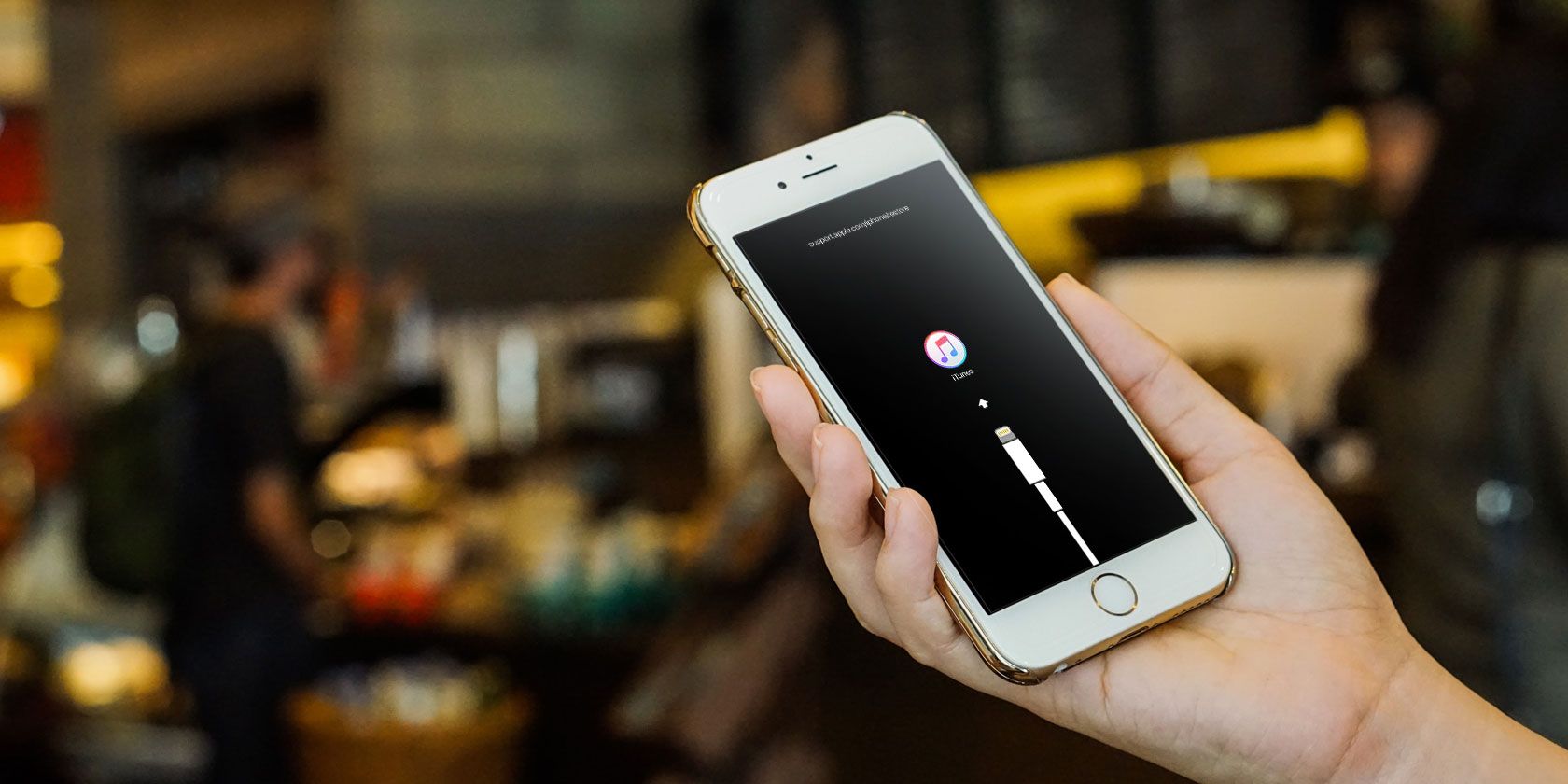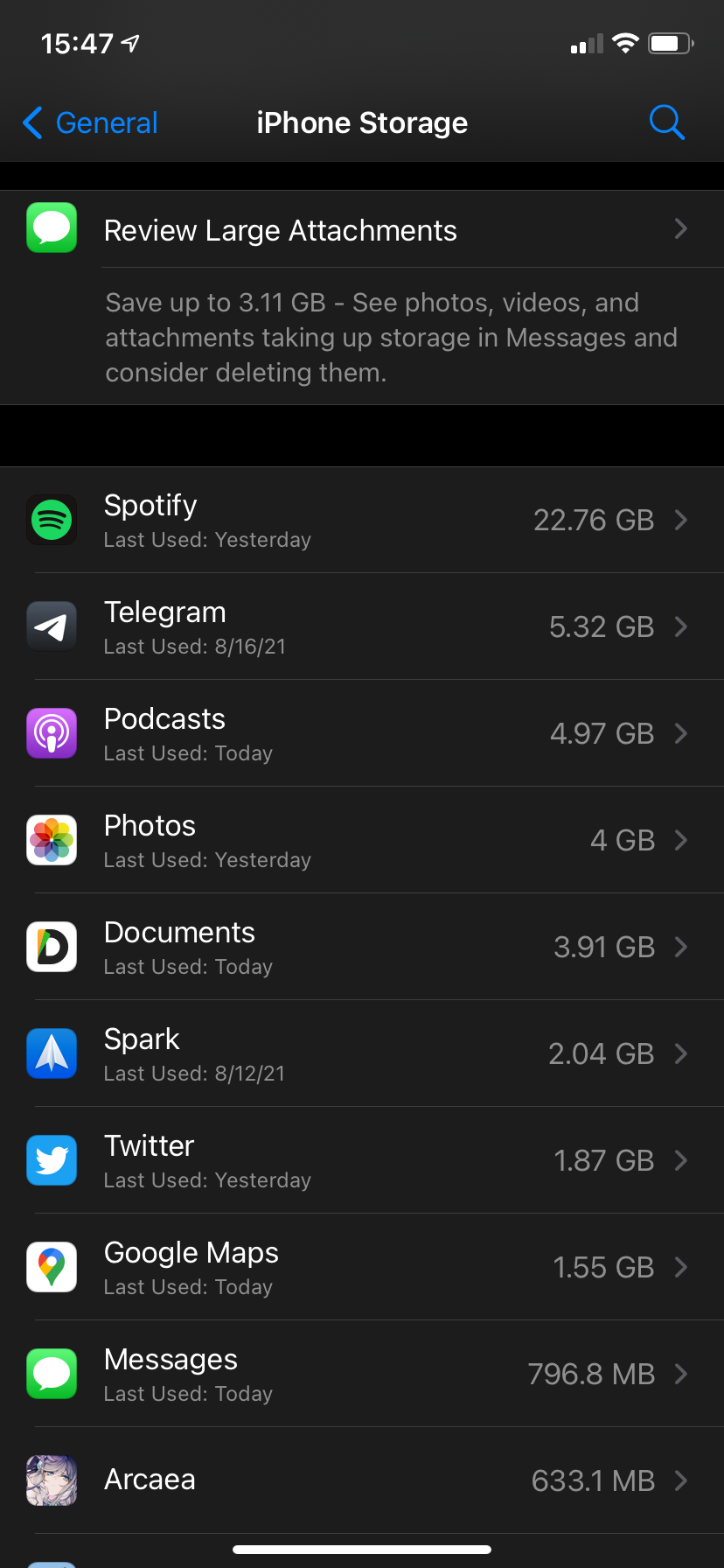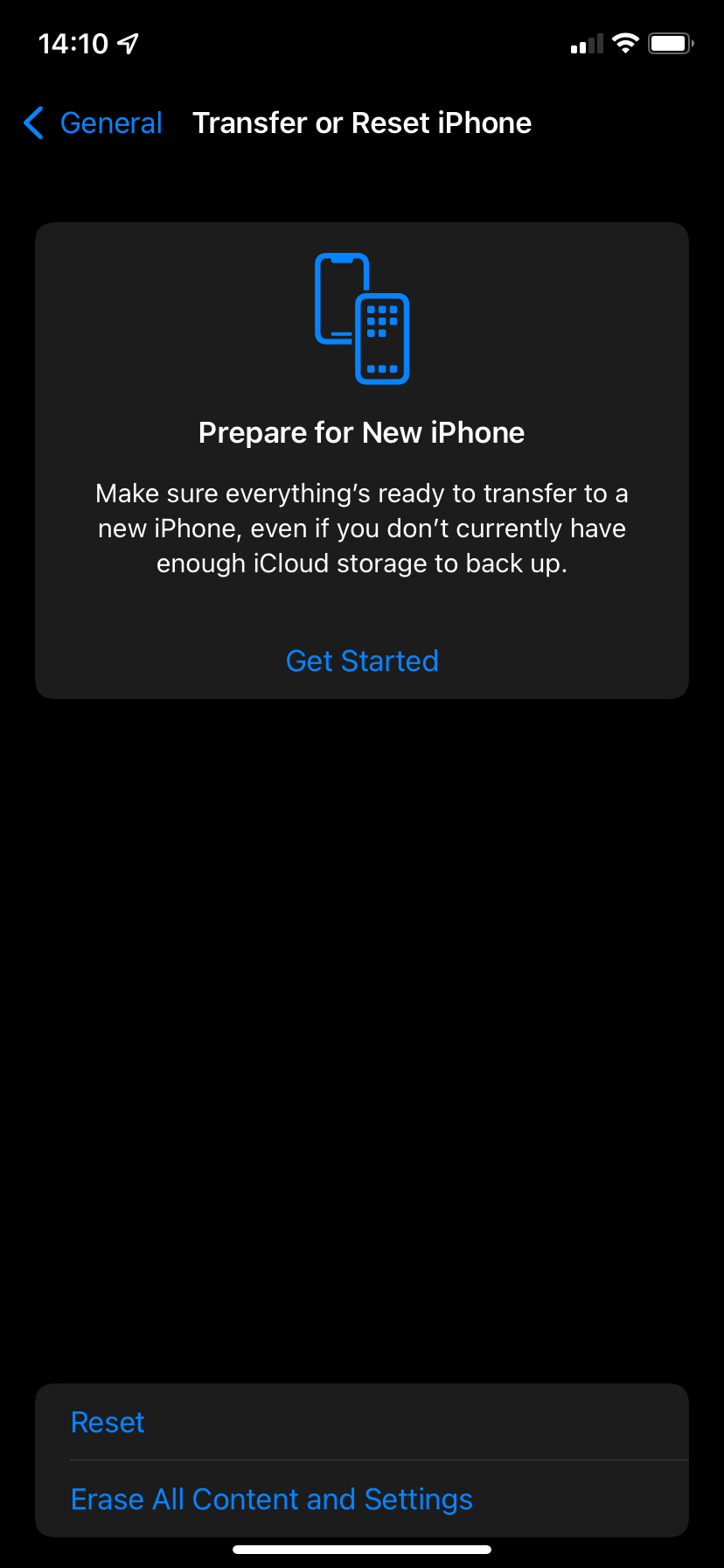
Struggling with iPhone/iPad Software Updates? Here Are 9 Solutions

Struggling with iPhone/iPad Software Updates? Here Are 9 Solutions
Having problems updating your iPhone or iPad to the latest version of iOS or iPadOS? There are a few reasons why you can face these issues. Don’t be disheartened, though—there’s usually a simple solution to the problem.
Let’s look at some fixes that will help you get the latest system software running on your device properly. Here’s how to fix your iPhone or iPad when it won’t let you update iOS or iPadOS.
Disclaimer: This post includes affiliate links
If you click on a link and make a purchase, I may receive a commission at no extra cost to you.
1. Charge Your iPhone or iPad
Let’s start with some basics before diving into more advanced troubleshooting. As you probably know, your iPhone won’t let you upgrade if you don’t have enough battery power. This is to prevent your device from shutting off in the middle of an update, which can cause serious problems.

Make sure you plug in your iPhone or iPad and have plenty of battery charge before starting the OS update. It’s a good idea to leave it on the charger while the process runs, too. That way, if it takes longer than expected, your phone won’t run out of power.
2. Make Sure Your Device Is Eligible for the Update
Over time, Apple drops support for older devices, so not all iPhone and iPad models can update to the latest iOS version. To make sure your device can get the latest release of Apple’s mobile operating system, scroll down to the bottom of Apple’s iOS info page or iPadOS info page , where you’ll see a box that saysiOS is compatible with these devices .

Look for your device name here. If you don’t see it, your phone or tablet is too old to get the latest version. This is a sign it’s time to upgrade your iPhone .
3. Wait a While Before Updating
If you try to update to the latest version of iOS as soon as it comes out, you might run into trouble. Apple’s servers go under heavy load when many thousands of people are trying to update all at once.
If you receive an error when trying to update to the latest version of iOS or iPadOS, try waiting for a while. You should have better luck later when the update servers aren’t under as much strain.
The update menu lets you schedule a system update to run overnight, when most people in your area won’t be trying to update. Try that, and if it doesn’t work either, wait a few days before giving it another shot.
4. Force-Restart Your Device

A one-off bug can prevent you from updating your iPhone. Restarting your phone will restart its processes and hopefully clear up any temporary glitches. If a normal shutdown and reboot of your phone doesn’t work, follow our guide to force-restarting your iPhone to learn how to escalate this process on your specific device.
Once you’ve done this successfully, you’ll see your screen turn black. Afterward, an Apple logo will appear and you’ll be greeted by your lock screen. Your device is now fully refreshed, so you can go ahead and try to update again.
5. Free Up Space on Your Device
A lack of device storage is a common culprit for a faulty update process. Luckily, modern versions of iOS and iPadOS help you free up space easily. Here’s how:
- OpenSettings .
- Scroll down and tapGeneral .
- TapiPhone Storage oriPad Storage .


Close
In this menu, you’ll see how much storage you have used and remaining. Depending on what’s taking up space, your phone will provide a few recommendations, including:
- Offload Unused Apps
- Review Large Attachments
- iCloud Photos
- Auto-Delete Old Conversations
Let’s look at what these do.
Offload Unused Apps deletes the install data for any apps that you rarely use. This won’t delete any of your personal files; only the app data itself is deleted. When you want to use the app again, you can redownload it as long as it’s still available on the App Store.
Review Large Attachments lets you see the largest photos and videos inside of Messages so you can delete them. This is often an easy way to gain a big chunk of storage, especially if you share lots of videos and photos with friends through texting.
iCloud Photos allows you to back up all your photos to iCloud. After doing this, you’re free to delete as many images as you want from your device, since they’re available in the cloud. However, if you do this, you’ll only be able to access your photos when you have an internet connection, since they’re no longer stored locally on your device.
Auto-Delete Old Conversations will make your phone clear out messages and attachments from a long time ago, in order to save space.
Once you’ve increased your free space, try the iOS update again. See more ways to free up space on your iPhone if needed.
6. Run the Update via iTunes or Finder
While most people are used to updating iOS right on their iPhone, you can still run a system update through your computer with iTunes or Finder. It’s not quite as convenient, but can come in handy if the over-the-air update isn’t working for you. This is also a solution if you can’t create enough free space on your device.
On Windows or macOS Mojave and earlier, you can update your iPhone through iTunes by following these steps:
- On Windows, download iTunes for Windows if you don’t have it already.
- Connect your iPhone or iPad to your computer with a cable.
- Open iTunes and click the small device button on the top bar, which appears underControls andAccount .
- Sync your iOS device using theSync button at the bottom-right. Depending on your settings, this may happen automatically.
- Once the sync completes, clickCheck for update in the top box.
- ClickDownload .
- Once the download is finished, selectUpdate .

Since Apple retired iTunes for Mac starting with macOS Catalina, you’ll need to do this through Finder instead. Connect your device to your Mac, open Finder, and click your device’s name on the left sidebar. This will bring you to a panel similar to the old iTunes interface, where you can follow the steps above (the necessary controls appear under theGeneral tab).
After doing this, the update should install onto your device. If you have trouble, see what to do when your iPhone won’t connect to your computer .
7. Delete Old Update Data (Including Beta Versions)
If you try to install an iOS update and it fails, the update data sits on your device so you don’t have to re-download it. But if there’s something wrong with what you downloaded, you need to delete it to force your iPhone to run the update again.
To do this, go toSettings > General > iPhone/iPad Storage again. In the list of apps, look for an iOS update. If you see one, tap it and chooseDelete Update . Then go back to the update page and try to run it again.
Similarly, if you have installed beta system software on your device, try uninstalling the beta version of iOS before attempting the update again.
8. Check Your Network and Reset Network Settings
If you can’t update through iTunes or Finder, the next step is to take a look at your network connection. A slow or unreliable Wi-Fi connection means you may not be able to update properly, both on your iPhone and through your computer.
Make sure you’re connected to a reliable Wi-Fi network when you try to update. It’s worth restarting your router if you haven’t done so in a while. If you have continued issues, you might also try connecting to another network and seeing if you have the same issue there. Follow our home network troubleshooting guide if you suspect a larger problem.
If you can’t update on any Wi-Fi network, you can reset your iPhone or iPad’s network settings to start fresh. Note that this will clear out all network preferences you’ve saved, so you’ll need to reconnect to all previously saved Wi-Fi networks again. This will also reset any VPN configurations you use, as well as Bluetooth connection settings.
To reset network settings on your iPhone or iPad:
- OpenSettings and tapGeneral .
- Scroll down toTransfer or Reset iPhone (on iOS 14 and earlier, this isReset instead).
- SelectReset at the bottom, followed byReset Network Settings .
- Enter your passcode and confirm you want to do this.



Close
Once you reset your Wi-Fi configuration, reconnect to a strong Wi-Fi network and try the iOS update again.
9. Reset All Settings, Then Factory Reset
If none of the above has fixed your problem, you should consider completely wiping your device. In the sameReset menu mentioned above, you can either reset all settings on your device or perform a factory reset to erase everything.
Resetting your settings probably won’t fix an update issue, but it’s worth a try first if nothing else has worked. Keep in mind that this will change all options back to their defaults, so you’ll have to configure options like privacy preferences and notifications again:
- LaunchSettings > General .
- ChooseTransfer or Reset iPhone .
- SelectReset > Reset all settings .
- Confirm with your passcode.
All your settings are now reset; try to update again once you reconnect to Wi-Fi. If it works, great! You’ll need to put all your settings back as they were. If that didn’t fix your problem, you can go to the most extreme route and reset your device to factory defaults.
Keep in mind that factory resetting will erase all the data on your iPhone or iPad . Make sure you’ve backed up your iPhone before proceeding so you don’t lose any information.
Here’s how to factory reset your device:
- OpenSettings > General .
- HitTransfer or Reset iPhone .
- SelectErase All Content and Settings from the bottom of the page.
- Walk through the steps, including entering your passcode to confirm.


Close
Your device will now revert back to its factory state. Because everything is fresh again, you’ll hopefully be able to update without issue. You can restore your iPhone backup during the setup process.
iPhone Updating Troubles: Fixed
It’s frustrating when your phone won’t let you update. Hopefully, one of these fixes solved your problem and you can now enjoy the latest version of iOS.
Aside from keeping current with updates, make sure you’re taking good care of your iPhone so it serves you for many years.
Also read:
- [New] Reversing OS Update on Macs Back to El Capitan
- [New] The Playlist Wizard YouTube Music Edition
- 2024 Approved FaceSaveDownloader Suite (Mobile, PC)
- 6 Common Problems with iPhone's Visual Look Up Feature
- Essential Guide: Reducing High Disk Use Caused by Microsoft Telemetry in 16 Steps
- From Zero to Hero Amplifying YouTube Influence via FameBit Partnerships
- How to Unlock Poco C50 Phone with Broken Screen
- Illuminating Factors Behind Your iPhone's Dimming Display - Explore These 10 Key Reasons Today
- In 2024, 10 Best Fake GPS Location Spoofers for Vivo Y78+ | Dr.fone
- In 2024, A Detailed Guide on Faking Your Location in Mozilla Firefox On Motorola G54 5G | Dr.fone
- Navigate Your iPhone with Ease: Unveiling 8 Accessibility Tools for the Visually Impaired
- Overcome iCloud Transfer Troubles with These Proven Fixes
- Silencing Your iPad: Solutions for Preventing Automatic Ringing with Your iPhone
- Step-by-Step Fixes for When Your AirPlay Won't Work Correctly
- The Book Of Ordinary Oracles | Free Book
- Troubleshooting Tips: Resolving Non-Updating Email Issues on Your iPhone
- Understanding the Seven Factors Behind Poor iPhone/Android Wi-Fi Speed
- Unlocking iPhone Standby: Top Eight Fixes for a Smoother Experience
- Unveiling the Most Effective Express Project Frameworks
- Title: Struggling with iPhone/iPad Software Updates? Here Are 9 Solutions
- Author: Edward
- Created at : 2025-02-27 16:21:02
- Updated at : 2025-03-02 16:39:30
- Link: https://fox-that.techidaily.com/struggling-with-iphoneipad-software-updates-here-are-9-solutions/
- License: This work is licensed under CC BY-NC-SA 4.0.